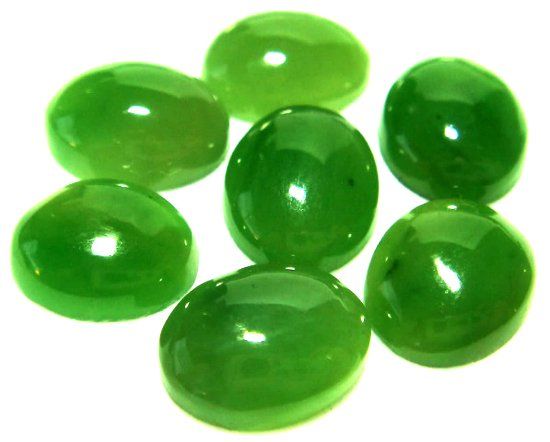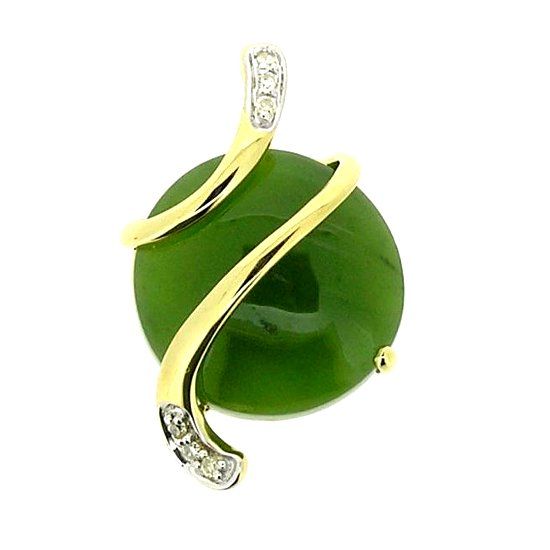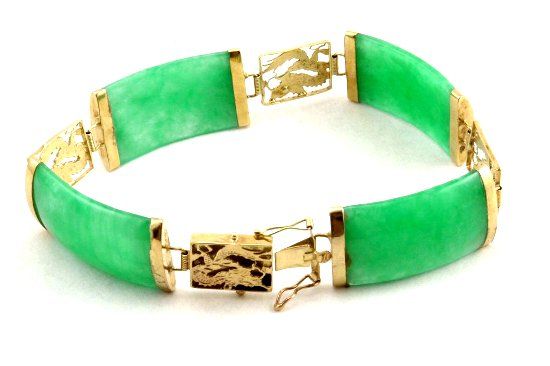Jadeite is not such a popular stone. Therefore, many are interested in what a mineral looks like? This rock is much stronger than jade, which belongs to the same group of minerals as jadeite.
Jadeite originates as a monomineral rock. It has a dense fine-grained structure, which is sometimes translucent. The stone is represented by the whole spectrum of green, but may have a different color. Rarely there are darker representatives of this breed.
magical properties stone depending on the color:
- It ennobles the virtues of a person: mercy, care, courage, modesty.
- Make the wearer wiser.
- Brings peace and harmony.
- Promotes mental balance.
- Repels failure and bad emotions.
- With the help of stone, you can control the weather.
Due to its magical properties, the mineral was used in magical rites. In the countries of the East and Egypt, temples and ritual places and halls were decorated with jadeite. For women and men, the mineral is a symbol of love and a talisman of their beginnings.
Who suits the zodiac sign: compatibility in astrology?

Jadeite is used very often as a talisman, but not everyone will be protected by its effects. Therefore, the choice should be made with a reasonable approach to business.
Especially the mineral is combined with the earth signs of the zodiac.
Who suits the mineral according to the horoscope, how it affects its owner:
For Sagittarius, Cancer and Capricorn, the effects of the stone will have a negative effect. Feelings and character traits will be dulled as a result of the influence of the energy field of the stone.
What color and how it looks: varieties of stone
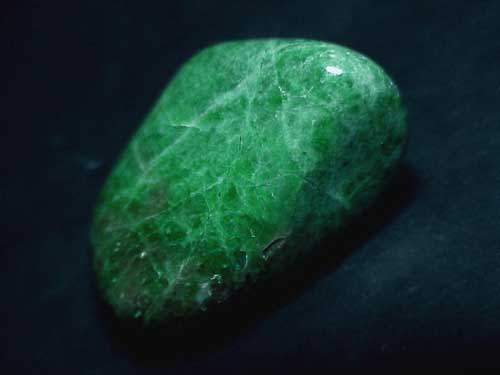
Jadeite is very often confused with jade, but this is only an external similarity - their varieties are significant. Especially valuable for jewelry and handicraft production is jadeite of green shades.
Varieties:
- Imperial is one of the most popular and valuable species jadeite. The color and texture are reminiscent of an emerald.
- Commercial, which has a dark color, but with light translucent streaks.
- The utility has a rich color scheme. It is often used as an ornamental material for the manufacture of interior details. Amenable to artificial refinement.
The raw mineral is used extremely rarely, but due to its malleability in processing, it is highly valued by professionals.
Note! Species are determined by foreign inclusions and the color of the mineral.
In fact, there are many more varieties of jadeite, but not all stones of this family are of value in jewelry or handicrafts.
How much: price

The mineral is quite common, which means its popularity. The price of mineral products in many respects often depends on what metal it is combined with. How was the stone processed?
In many ways, the cost depends on the size and deposit of the mineral.
How much does jadeite cost:
- Polished stones cost between 100-400 rubles per unit.
- Large products made of solid jadeite cost between 5000-50000 rubles.
- Small crafts cost about 200-1000 rubles.
- Crafts for the interior have a cost in the range of 10,000-100,000 rubles.
The value of the pricing policy is determined by the master jeweler who works with the material.
Products and decorations made of stone and its application
In jewelry and ornamental production, jadeite is highly valued.
The following jewelry is made from the mineral:
- Earrings.
- Amulets.
- Rings.
- Bracelets.
- Brooches.
- Pendants.
But the use of the mineral is much wider. From the layers, coasters and figurines, interesting compositions are made.
Important! Qualitatively processed stones are the key to a beautiful piece of jewelry that is not inferior to precious stones in terms of aesthetics.
The variety of crafts is so great that it is impossible to list them - it all depends on the imagination of the customer and the master.
Medicinal properties: are they?

The mineral produces many positive effects. Among them are not only magical, but also medicinal properties.
The healing properties are so extensive that almost all systems of the human body fall under the influence:
- Positive impact on nervous system.
- Relieves from problems with blood pressure.
- The genitourinary system works much better.
Young girls and women who have problems with infertility need to have talismans with a jade insert.
How to distinguish a fake: authenticity check
Natural stone has its own special features that are very difficult to fake or artificially produce in the laboratory.
Authenticity can be determined by the following criteria:
- Under a magnifying glass, granular inclusions and fibers can be seen.
- Treat with water with a drop of ammonia. The paint will wash off the fake.
- It has a high density, so it sinks very quickly in water.
These are the main tests for authenticity, but there are less reliable ones. It is better to contact a specialist.
Mineral deposits

The largest and most popular deposits were discovered only in the 19th century. Prior to this, mass mining of the stone was not observed.
The mineral is mined in certain places.
There are no more than 10 deposits in the world:
- Ural, Krasnoyarsk Territory.
- Japan.
- Mexico.
- Southeast Asia.
- Burma.
- Manyama.
In China, the mineral has been mined for a long time and in large quantities, as it has been used in traditions and rituals since ancient times.
Care and storage
It is worth storing items made of jadeite carefully, as it is very fragile and can be easily damaged as a result. mechanical influences.
Care is required careful and progressive:
- Wipe with a damp cloth.
- Clean with a soft brush.
- Dry naturally.
Do not use harsh chemicals in the cleaning process. The mineral must not be subjected to mechanical cleaning with hard materials.
Useful video
The mineral is a chain silicate and has a different color: from yellow, purple, black and reddish to colorless and bright green. The stone has sufficient strength and hardness, it is quite difficult to crush it. Jadeite is a valuable rock and is quite expensive.
Where is the gem used
 Often the mineral is used in the manufacture of various souvenir products. It is especially popular with jewelers. It is used in the form of tiled finishes and floor pebbles in baths and bathrooms. The cleansing properties of the stone help to absorb heavy
Often the mineral is used in the manufacture of various souvenir products. It is especially popular with jewelers. It is used in the form of tiled finishes and floor pebbles in baths and bathrooms. The cleansing properties of the stone help to absorb heavy  metals. He also found his vocation in stone therapy and is used for relaxing complex and acupressure massage, as well as in cosmetology.
metals. He also found his vocation in stone therapy and is used for relaxing complex and acupressure massage, as well as in cosmetology.
Known deposits
 The mineral is mined in Italy, Turkey, Great Britain, Mexico. Large mining sites are also located in Kazakhstan (Pribalkhash), in the eastern territory of China, in India, the USA (California, Nevada). In Russia, deposits are being developed in the northern territory of the Urals and in the Krasnoyarsk Territory. In Indochina (Myanmar), jadeite stone has been mined for a very long time, found here, it is considered an excellent jewelry material. A rare blue species is mined in Guatemala.
The mineral is mined in Italy, Turkey, Great Britain, Mexico. Large mining sites are also located in Kazakhstan (Pribalkhash), in the eastern territory of China, in India, the USA (California, Nevada). In Russia, deposits are being developed in the northern territory of the Urals and in the Krasnoyarsk Territory. In Indochina (Myanmar), jadeite stone has been mined for a very long time, found here, it is considered an excellent jewelry material. A rare blue species is mined in Guatemala.
From the history
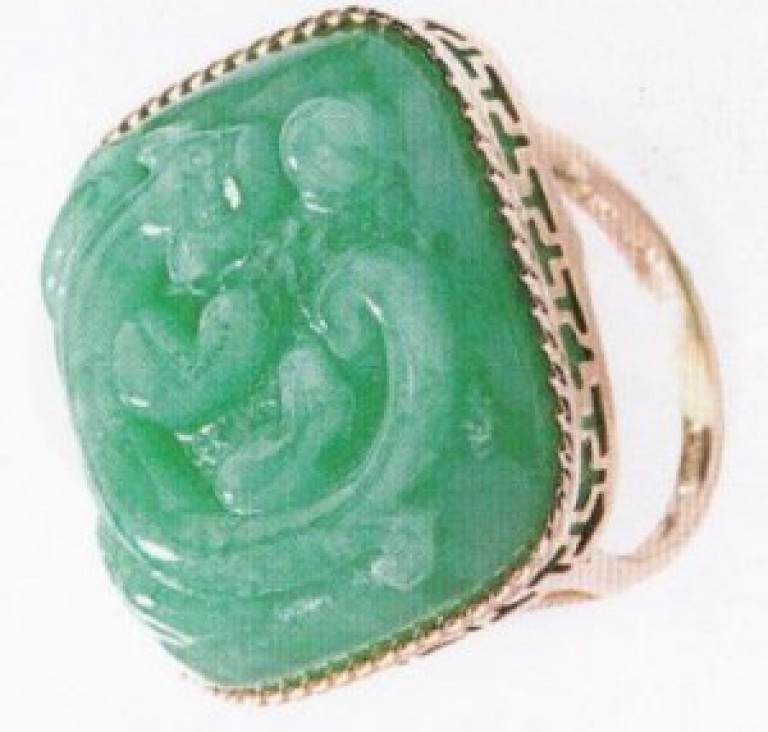 Jadeite has been known for more than seven thousand years and is valued by many nations. It was used to make tools, magical figurines for rituals, jewelry and healing powders. In China and Kazakhstan, stone products from the early centuries before our era have been found. A large number of exhibits and art objects are made from this mineral. In Shanghai, this is a revered human-sized Buddha statue. The Hermitage and the Museum of Oriental Culture also hold several collections. You should know that many ancient products, objects and jewelry are not made of jadeite, but of common jade, with which they are very similar.
Jadeite has been known for more than seven thousand years and is valued by many nations. It was used to make tools, magical figurines for rituals, jewelry and healing powders. In China and Kazakhstan, stone products from the early centuries before our era have been found. A large number of exhibits and art objects are made from this mineral. In Shanghai, this is a revered human-sized Buddha statue. The Hermitage and the Museum of Oriental Culture also hold several collections. You should know that many ancient products, objects and jewelry are not made of jadeite, but of common jade, with which they are very similar.
Varieties of stone in commercial production
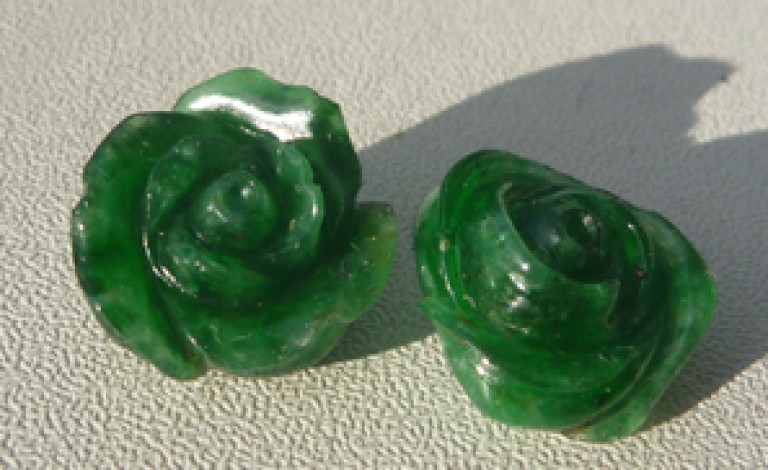 Despite the fact that the price of the stone varies greatly, it is quite expensive. The following groups are distinguished on the market of stones:
Despite the fact that the price of the stone varies greatly, it is quite expensive. The following groups are distinguished on the market of stones:

Extraordinary Properties
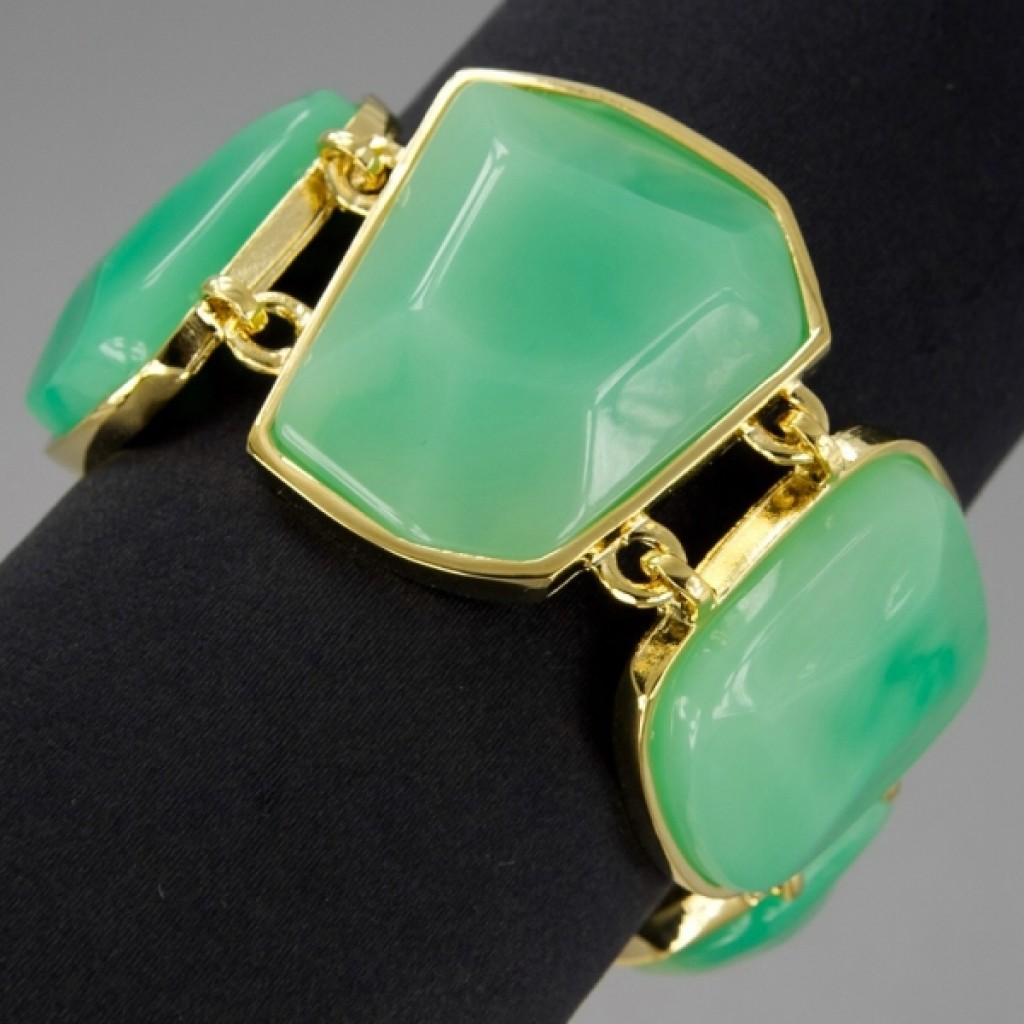 Even in ancient times, the jadeite talisman was considered a strong defense. He is able to protect a person from thieves and scammers, from ill-wishers and envious people. If a person is in great danger, the stone can break, thereby giving an alarming sign.
Even in ancient times, the jadeite talisman was considered a strong defense. He is able to protect a person from thieves and scammers, from ill-wishers and envious people. If a person is in great danger, the stone can break, thereby giving an alarming sign.
The mineral is advised to be purchased by businessmen who often make deals. Its magical properties will bring good luck and profit in such matters.
Jadeite, being a stone of peace and tranquility, will help you achieve peace of mind and gain confidence, remove you from empty thoughts, and help you avoid conflicts with family, friends and colleagues. He will not allow you to do a vile or low deed.
 The stone can become real family psychologist for its owner. It will help you understand your partner, get rid of jealous feelings and start trusting.
The stone can become real family psychologist for its owner. It will help you understand your partner, get rid of jealous feelings and start trusting.
beloved person. The wonderful properties of jadeite will help create family harmony, peace and understanding in the house. It will be useful for those who have children. The owner of the stone will find with them mutual language and learn how to properly educate them.
People who are characterized by nervous tension should carry green jadeite with them. This will help to calm down, find psychological balance. One has only to look at its beautiful overflows.
This gem is closely associated with weather phenomena. Even in ancient times they spent with him magical rituals causing rain during dry periods. Now it helps to protect yourself from lightning in thunderstorm weather.
Healing properties
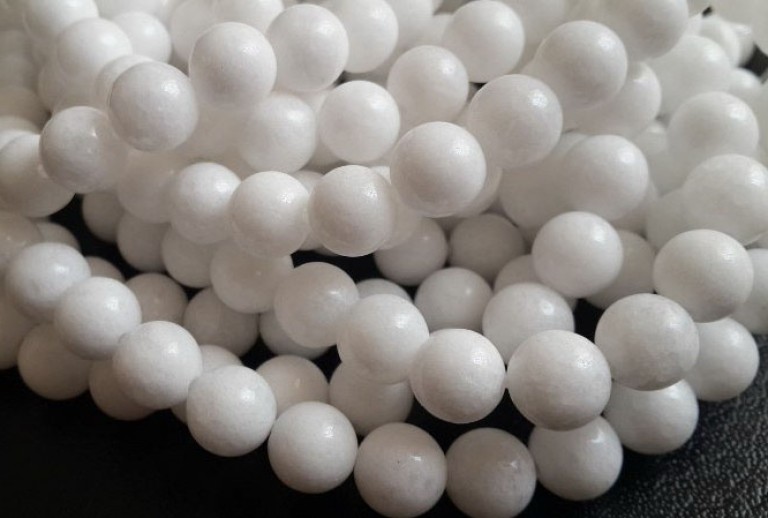 Jadeite is translated from Spanish as "colic stone", which indicates its ability to favorably affect the functioning of the kidneys. In lithotherapy, it is a stabilizing stone and has a powerful effect on the energy fields of the body. By enhancing the effect of medications, it provides a quick recovery.
Jadeite is translated from Spanish as "colic stone", which indicates its ability to favorably affect the functioning of the kidneys. In lithotherapy, it is a stabilizing stone and has a powerful effect on the energy fields of the body. By enhancing the effect of medications, it provides a quick recovery.
The mineral helps women overcome problems with the organs of the reproductive system, and men overcome impotence and impotence.
It is necessary to wear jadeite beads and bracelets to avoid diseases of the heart vessels and problems with pressure, stomach and intestines. The healing properties of the gem help get rid of cough, restore normal sleep. A jade ring worn on the middle finger will help relieve eye strain and cope with myopia.
Dark red stone heals wounds and stops bleeding. White will strengthen the immune system and relieve weather sensitivity.
jadeite in astrology
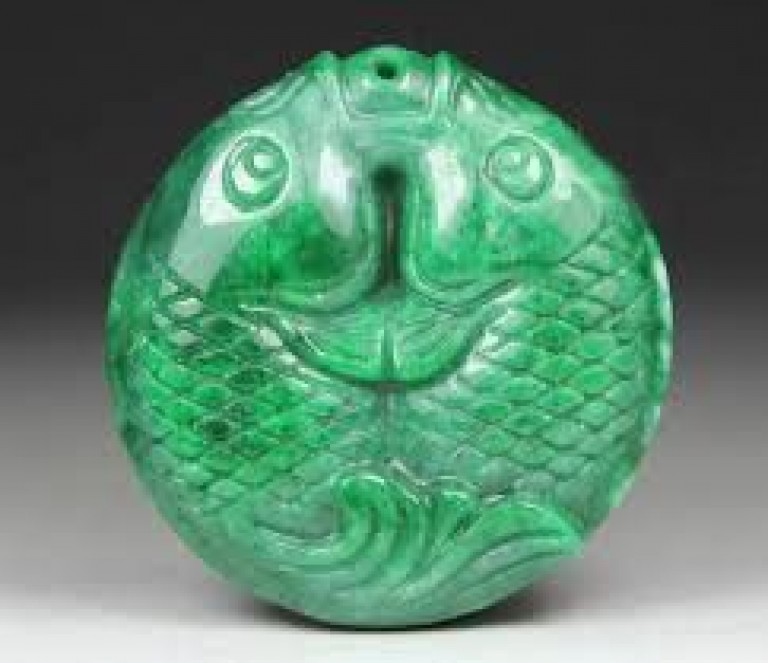 This unique mineral has a different effect on all representatives of the zodiac signs. It should not be worn by Pisces, Scorpios and Cancers. This can cause these signs to have a pessimistic attitude and apathy towards everything that happens. Capricorns can also be subject to minor setbacks and troubles if they keep jadeite. For Virgo, on the contrary, it will serve as an excellent support and give self-confidence. Libra and Leo will be able to strengthen their strong-willed qualities, bring their ideas to life. This gem is also suitable for other astrological signs. He does not show his magical powers with them, but his unusual properties will help to cleanse himself morally and become more restrained and kinder.
This unique mineral has a different effect on all representatives of the zodiac signs. It should not be worn by Pisces, Scorpios and Cancers. This can cause these signs to have a pessimistic attitude and apathy towards everything that happens. Capricorns can also be subject to minor setbacks and troubles if they keep jadeite. For Virgo, on the contrary, it will serve as an excellent support and give self-confidence. Libra and Leo will be able to strengthen their strong-willed qualities, bring their ideas to life. This gem is also suitable for other astrological signs. He does not show his magical powers with them, but his unusual properties will help to cleanse himself morally and become more restrained and kinder.
Who should wear a stone
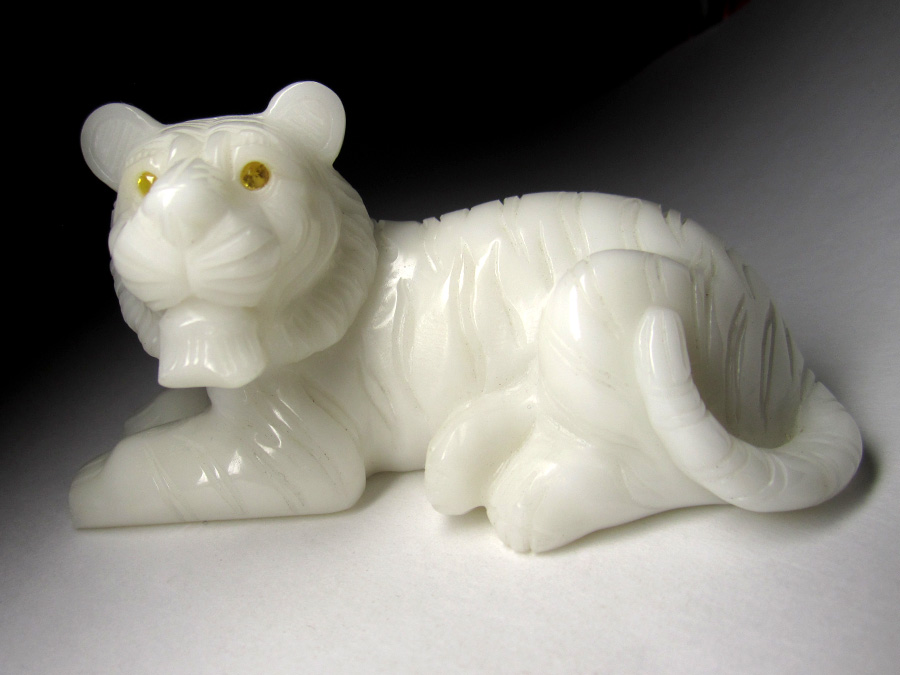
It is recommended to wear it to people whose occupation is associated with intellectual and analytical activities, including jurisprudence. The main condition is that the actions and deeds of the owner must be legal and not immoral. Otherwise, the stone may cease to provide any assistance.
jade care
 In order for the stone not to lose its magnificent appearance and unique properties, it is necessary to properly care for it:
In order for the stone not to lose its magnificent appearance and unique properties, it is necessary to properly care for it:
- jewelry and souvenirs are best kept in a soft box or box;
- do not allow direct exposure to the rays of the sun, strong dust and moisture;
- despite the hardness of the stone, it must be protected from shock and mechanical stress;
- jadeite is cleaned every six months, using warm water and ordinary soap. After washing, wipe it dry.
It is impossible to remain indifferent to this wonderful green gem with an emerald sheen. The sight of this stone is mesmerizing to think that it has lived longer than many great civilizations.
HISTORY OF JADE - JADI'S TALISMAN A lot of conjectures and conjectures go around what kind of stone is actually encrusted in the frame of Zhadi's pendant, namely: jadeite or still jade. After all, the nature of the origin of these stones is very similar. Jadeite is a silicate of sodium, aluminum and iron. Jade is a silicate of magnesium, calcium and iron. In ancient times, people did not distinguish between these two minerals and perceived them as one and the same stone. And until now, in many languages, jade and jade have the same name - jade (jade). From here came the name of the main character - Zhadi. Let us recall the legend of the appearance of the Jade pendant itself. Zhadi's mother, being pregnant, loved to rest in the shade of a large tree. One day, a green glow caught her attention. And as soon as Zhadi's mother went to see what was so shining there, she found a stone that attracted her curiosity - lightning struck the tree, burning it to the ground. So Zhadi's mother and, accordingly, Zhadi herself miraculously survived thanks to the stone, which later became Zhadi's talisman. The extraction of jade from ancient times was not difficult - it is found and found not only in rocks, but simply in placers. Jade is still often found along the banks of rivers and streams in the form of jade pebbles. And even on mountain spits, for example, in the taiga. River jade is often valued higher, as it is already polished with water and can shine like a finished gem. As for jadeite, there are not so many of its deposits (no more than a dozen known all over the world); while good quality raw materials (bright minerals) are mined only in Burma (Myanmar). But well-formed prismatic crystals can be found extremely rarely there, since jadeite is found in deposits, where it occurs in the form of massive plates. Jade is a stone more than legendary. Like many others, it was originally quite a utilitarian material, but then, when people became interested in the beauty of products, it gained even more popularity. In China, jade was valued more than gold. In other countries, it was treated with more restraint, but it was still used with pleasure to create both works of art and jewelry. Talking about the history of jade, it is necessary first of all to note its unique properties. It is not a very hard stone, but it has a fine-fiber structure, which makes its strength and toughness incredibly high. There is a legend that a block of jade was placed on an anvil and they wanted to split it by hitting it with a blacksmith's hammer. But the anvil itself cracked and fell apart into two parts. Unlike the same diamond or ruby (materials are incredibly hard, but fragile), it is impossible to split jade. During the Neolithic, it was used to make primitive tools such as scrapers, axes, and knives. Such tools are still found in many excavations of the sites of primitive people. As for the use of jade for decorative purposes, its history also goes back many centuries. There are deposits of this stone on almost all continents, therefore many peoples used it, although it was revered more than others in China. According to one of the legends, in ancient China there lived an emperor known for his righteousness. The gods decided to encourage him by sending rain from a previously unseen stone to the earth. When he touched the heavenly stone, he learned about all the amazing properties of this material - jade. Since then, the stone began to be valued in this country more than gold, because it personified all the good that can be imagined. He was one of the symbols of the emperor's power, and some varieties, for example, milky white, "the color of mutton fat", could belong only to him. There were many beliefs and traditions associated with jade. For example, special bundles with a stone were carried by the envoys of the emperor as confirmation of their status. And in some periods, people addressing directly to the emperor had to hold small plates of jade in front of their faces so that the breath of mere mortals would not offend the “son of heaven”. As for the use of jade for jewelry purposes, here the Chinese have reached the heights of skill. Anything was made from it - from massagers and medical plates of various sizes and shapes, to real works of art. Vases, caskets and dishes were also found among other peoples, but the real miracle is Chinese jade carving. They have learned to carve living, almost breathing, translucent sculptures from this stone, so delicate and weightless that it is hard to imagine that they were once a piece of jade. The tradition of decorating funeral clothes and other attributes with this stone is interesting. It was believed that it provides the dead people with the best place in the afterlife. Sometimes they even made original armor from it, fastening jade plates with silver or gold wire. There are many colors of jade. Translated from Greek , the name of this stone, jade, is translated as "kidney" (meaning the organ of the body). The fact is that often this mineral was found in riverbeds. The pebbles rolled over the years became rounded, really similar to this organ. Its outdated name is jade, which connects it with another stone - jadeite. It was only in the nineteenth century that they learned to distinguish between these two types of stone. The most common is green jade. It is this color that is most characteristic of it, and its shades can be different: from pale, yellow-green to dark marsh. Malachite has a similar palette, but these stones are completely different in structure. Sometimes there are completely different variations. For example, white jade. It was valued in China more than gold, for a long time remaining one of the symbols of imperial power. Only members of the ruling family could have jewelry and products made from such jade. There may be another extreme - black jade. It was from this stone that the tombstone was made on the grave of the great Tamerlane. Rare blue and red jade are even more expensive and much rarer. The color of jade depends on the chemical composition. Magnesium, iron and manganese give it color, and depending on the ratio determine the color. The price of jade depends not only on its color, but also on the pattern. The most expensive are stones of even color, without spots and transitions. There are two types of jade deposits. The first is traditional underground veins, the second is river placers, thanks to which it got its name. Of course, rivers carry only small stones, while very large formations are found underground. The heaviest solid block of jade weighed 8 tons and was found about fifty years ago. The Chinese government took a long time to decide what to make of this miracle of nature, and, in the end, a Buddha statue about 6 meters high was carved out of it. Translucent jade is valued above all, such that it is translucent on thin sections. It is this combination of tenderness and incredible hardness even for a stone that made jade one of the most valuable ornamental materials. It would be surprising if such a stone as jade would not have magical properties in the eyes of people. For example, it is believed that he is able to help a person change his life for the better and start the path to self-improvement himself. In addition, it gives good luck in business, so it is recommended to wear it to business people, in whose work a lot depends on the combination of circumstances. Also, he has always been considered the talisman of people of mental labor. It is believed that jade reacts not only to the mood, but also to the actions of people. In dishonest and unkind, it can fade, become cloudy. For those who live the right life, it remains pure and translucent. In China, jade was considered the best remedy for the treatment of almost all diseases - both physical and mental. It was applied, ground into powder and taken with food, carried with you. Traditional Chinese medicine actively uses the healing properties of jade. Jade is able to accumulate and retain heat well. If you hold it in your hands, and then apply it to a sore spot, then the stone will slowly give off heat, relieving pain and inflammation. Jade is often used to treat diseases of the kidneys and the genitourinary system. To do this, you must always carry it with you. It can also help relieve attacks of cholecystitis and pancreatitis. Jade is considered an ornamental stone, so it is actively used to create a variety of products, ranging from huge vases and bowls to small rings, earrings, pendants. Many of them are unique and are made by craftsmen in a single copy. But you can often find replicated products: glasses, glasses, glasses. It is believed that the water poured into them acquires special properties. Various table figures and decorations (balls, pyramids), paperweights, tableware, clocks and souvenirs are popular. Sometimes jade is used to finish larger items: furniture, fireplaces, interior items. As for jade jewelry, they are also found, although not too often. Rings carved from solid stones, thin inserts in earrings, pendants and brooches look beautiful.
The appearance of the mineral resembles jade, but it contains sodium and aluminum, they make the stone more dense. Since ancient times, it was believed that this material affects the weather.
Description: history, properties, deposits and varieties
Another name for jadeite came to us from Central America, where the indigenous people called it "kidney stone". However, it was most popular in Asian regions. Jadeite is mentioned in Chinese legends, it was endowed with mystical properties. The Chinese believed that the mineral appeared from a giant, the progenitor of everything that exists on earth, and the goddess of immortality regularly took baths in a jadeite lake, her dwelling was made of the same material.
The mineral can be a variety of colors: blue, yellow, red, purple, but most often different shades of green. The emerald color is due to the content of chromium and aluminum in the structure of the mineral.
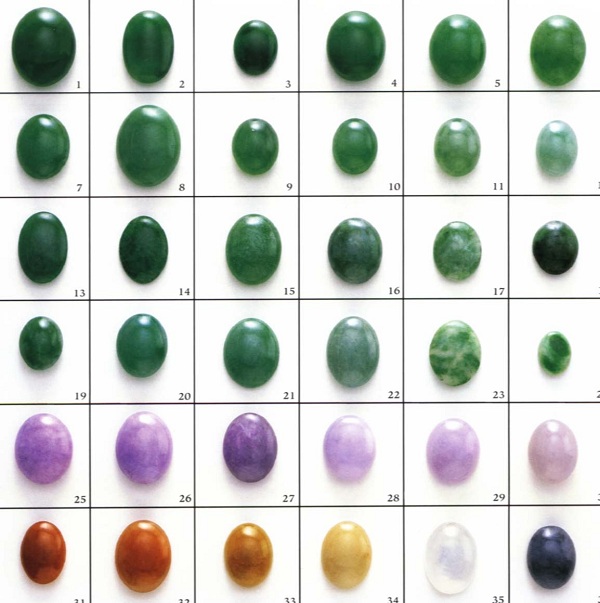
Jadeite is found only in a few regions of the world, for example, in Russia it is the Ural Mountains. Basically, the stone is used for jewelry, and their price is quite high due to the rarity of the material.
There are several varieties of this stone:

Healing and magical properties, stone and zodiac signs
Jadeite has a good effect on the functioning of the kidneys, because it is not for nothing that it is called "kidney stone". The mineral has the ability to enhance the effect of drugs, especially if they are of natural origin.
Prolonged wearing of the stone eliminates sexual problems and promotes the conception of a child in case of infertility.
In the East, the gem serves to restore the energy of a person, and jadeite jewelry has a positive effect on the work of the heart and pressure. Rings with jadeite improve vision, reduce eye fatigue, they are useful for people who spend a lot of time at the computer.
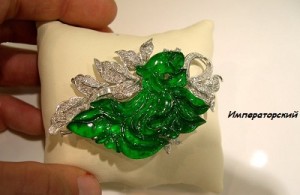 Due to the property of the stone to gradually give off heat, it is often used in stone therapy, and craftsmen also make various hand massagers using this mineral. In China, where the gem was very popular, they made a special drink that improves the physical and psychological state of a person.
Due to the property of the stone to gradually give off heat, it is often used in stone therapy, and craftsmen also make various hand massagers using this mineral. In China, where the gem was very popular, they made a special drink that improves the physical and psychological state of a person.
It was based on rice grains, dew drops and pieces of jadeite, all the ingredients were mixed in a copper bowl, boiled, and then the drink was filtered. The resulting potion had the ability to quench thirst and hunger, it was given to travelers on the road. Jadeite was often used to make jars for storing liquids, because it prevented water from blooming due to its antiseptic properties.
Jadeite manifests its magical properties in various areas: it gives the owner confidence in himself and in the future, stabilizes the emotional state and activates logical thinking. Holders of talismans with this stone successfully avoid conflicts, because on an intuitive level they choose a line of behavior that smooths out sharp corners in relationships with others.
In personal life, jade provides harmony, suppressing jealousy in both partners. The thinking of the owner of the stone becomes sublime, and the person is no longer able to commit ignoble deeds. The mineral helps to establish communication with the younger generation, it helps adults understand the thoughts and feelings of children.
![]() As a talisman, jadeite has long been used to influence the elements of nature; priests often used it to call for rain in dry years. A large energy potential stabilizes the energy of vast areas. The stone provides reliable protection against any negative energy, for example, envious or scammers. Jadeite also provides good luck in transactions, for this it is enough to take it in hand while signing the contract.
As a talisman, jadeite has long been used to influence the elements of nature; priests often used it to call for rain in dry years. A large energy potential stabilizes the energy of vast areas. The stone provides reliable protection against any negative energy, for example, envious or scammers. Jadeite also provides good luck in transactions, for this it is enough to take it in hand while signing the contract.
Jadeite can be called a stabilizer stone, it restores balance in weather, blood pressure or a conflict situation.
How natural stone it is used for improved crop growth, but its healing properties are even more used in medicine as a prevention of many diseases. The presence of jadeite products in the house contributes to the creation of harmony in the family, he is the keeper of the family hearth.
Modern fashion trends have made this material popular for lining baths and saunas; it heats up for a long time, but also gradually releases heat, releasing steam filled with beneficial acids. Such steam has a rejuvenating effect and helps to cure bronchitis.
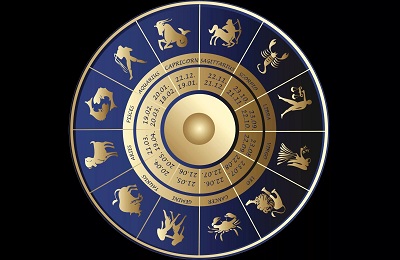 There are cases when a stone gave its life in order to keep the owner healthy, taking a hit on itself, in such cases it breaks into pieces and it is necessary to replace it with a new one as soon as possible in order to minimize contact with negative energy and do not attract ailments again.
There are cases when a stone gave its life in order to keep the owner healthy, taking a hit on itself, in such cases it breaks into pieces and it is necessary to replace it with a new one as soon as possible in order to minimize contact with negative energy and do not attract ailments again.
Jadeite is especially recommended for the signs of the Zodiac Libra and Virgo, it makes them more self-confident and helps to create a strong family union. In general, the mineral is well suited to all earthly signs of the zodiac, it goes well with their character.
The mineral is contraindicated for Cancers, Sagittarius and Capricorns - the representatives of these signs of the Zodiac, when wearing a stone, exacerbate the worst qualities, for example, laziness and apathy. Conflicts with the signs of the Zodiac of the water element are due to the variability of the states of the liquid, which is completely opposite to the stability of jadeite.
How to distinguish a real stone from a fake, the rules of care
The high price of jadeite and its limited supply has led to many fakes. To distinguish a fake, you need to remember a few rules.

Of the minerals, jadeite is the easiest to confuse with jade, but its price is about the same if we are talking not about imperial jade, so it is not profitable to deceive buyers by replacing stones with each other.
Until the beginning of the 20th century, researchers did not notice the difference between jade and jadeite, even now they are confused both live and in the photo because of their similar appearance.
The main difference between these two stones is in the chemical elements that make up the composition, the presence of magnesium and iron in jade makes it more dense. It is also possible to distinguish jadeite and jade by sound, when hitting jade, a special musical sound arises, and jadeite remains silent. Many jewelers try to get rid of brown inclusions in jadeite, but such manipulations change its structure and make it less durable.
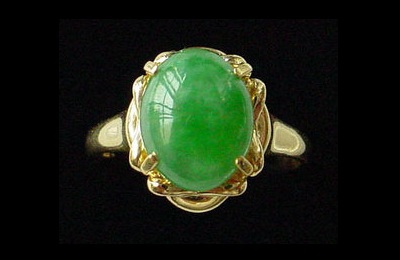 To strengthen the stone, special polymers are used, which can be seen with a special filter. Sometimes in stores you can find Indian or Australian jadeite, but such a stone does not exist, as aventurine and chrysoprase are mistakenly called. They have a completely different structure.
To strengthen the stone, special polymers are used, which can be seen with a special filter. Sometimes in stores you can find Indian or Australian jadeite, but such a stone does not exist, as aventurine and chrysoprase are mistakenly called. They have a completely different structure.
Jadeite products should be stored separately on a soft surface, strong chemical and mechanical influences should be avoided. Direct sunlight and high humidity are contraindicated for the stone. It is advisable to clean jadeite a couple of times a year, without the use of strong chemicals, the most suitable means of cleaning are warm water and soap, after this procedure, the stone must be wiped dry.
Jadeite is a rare stone whose unique physical properties and beauty were valued different nations over the course of several millennia.
History of the stone
Jadeite was first used in China 5000 years ago. True, then this beautiful green stone intended exclusively for members of the imperial family. Only for the first persons of the country, dishes and bedding were made from jadeite, and in addition, the mineral was used for lining the imperial steam rooms.
On the American continent, jadeite deposits were discovered in 2000 BC. The Maya and Aztecs used this mineral to make ritual figurines and necklaces.
Pliny the Elder, Theophrastus, Dioscorides, and even Confucius described healing properties jadeite in his scientific works.
In the 6th century, jadeite was actively used in Chinese medicine. Powder from this stone was prescribed for heartburn, asthma and even diabetes.
In the Middle Ages, jadeite depreciated a bit and became available not only for the emperor, but also for wealthy Chinese. At that time, there was a saying: "If you allowed yourself to leave the house without jadeite, then you have no right to call yourself a decent person."
In the 19th century, jadeite gained popularity in Russia thanks to C. Faberge, who made various jewels from jadeite for the royal court.
Description of the mineral
Outwardly, jadeite is very similar to jade - it is a dense, hard, opaque or translucent stone with a greasy or glassy sheen. That's just the composition of jadeite is completely different, besides, unlike jade, the color scheme of jadeite is diverse. Although it is generally accepted that jadeite has an exclusively green color, minerals of white, yellow, red and even blue shades are found in nature. True, transparent green specimens are still most highly valued.
It is believed that the name of the stone "jadeite" comes from the Spanish phrase "piedra de jad", which means "side stone", because until the 19th century, lumbar pain was treated with jadeite. The stone received its final name thanks to the French scientist A. Demur, who in 1863 introduced the term "jadeite" in his works.
In China, the stone is called "Hi-sui", however, in the world this name is not widespread.
Varieties of jadeite
In nature, jadeite is quite common. There are the following varieties of gem:
- Chloromelanite is a type of jadeite that has a rich dark green or black color. It contains silicate of sodium, aluminum and iron.
- Imperial is a variety of jadeite with a delicate emerald green color. The stone is translucent and has a fine-grained structure. One of the most expensive varieties of jadeite.
- Utilities is a variety of bright green jadeite. The mineral is opaque. Sometimes there are white matte and shiny black specimens of this variety of jadeite.
- Commercial is a variety of jadeite that has a matte green color and is distinguished by the presence of transparent veins and spots.
- Albite jadeite is a variety of jadeite that has a rich bright green color. hallmark This type of mineral has a unique black pattern of dots and veins.
Chemical composition and physical properties of stone
According to its species, jadeite is a silicate of sodium and aluminum.
In nature, jadeite is formed under conditions of high pressure and low temperature. Under the influence of these factors, a granular monomineral rock is formed.
There are three theories of jadeite formation: metamorphic (formation under mesozone conditions), magmatic and hydrothermal-metasomatic.
The chemical formula of the mineral: NaAlSi2O6. The main chemical composition of jadeite includes:
- SiO2 (silicon dioxide) - 54-60%
- Al2O3 (aluminum oxide) - 16-27%
- Na2O (sodium oxide) - 9-16%
- FeO (ferrous oxide) - up to 6%
- CaO (calcium oxide) - 0.4-13%
- MgO (magnesium oxide) - 0.3-8%
In addition to these compounds, in chemical composition the mineral combines more than 60 chemical elements. However, its main impurities are: calcium (Ca), magnesium (Mg), manganese (Mn) and chromium (Cr). Exactly these chemical elements determine color scheme stone, which can include purple, and gray, and blue, and pink, and brown, and white, and black, and yellow, and red shades.
This natural mineral has a cryptocrystalline structure and a splintery (fibrous) fracture.
In nature, jadeite aggregates have a glassy or oily sheen. In addition, the mineral has a granular monomineral rock. The hardness of the stone is 6-7 units on the Mohs scale, and the density is 3-3.5 g/cm3.
Jadeite deposits
Jadeite is a rare gem.
The main deposits of jadeite are located in China, Japan, Mexico, Guatemala, the USA and Kazakhstan.
In Russia, this mineral is mined in Khakassia, the Western Sayan and the Polar Urals.
The healing properties of the mineral
The unique mineral impresses with its healing properties.
Jewelery with jadeite helps with:
- headache;
- toothache;
- insomnia;
- asthma;
- cardiovascular diseases;
- cough;
- liver diseases.
An uncut mineral is a good catalyst. It also stabilizes blood pressure and can cure infertility in women.
The magical properties of jadeite
In ancient China, with the help of jadeite, illnesses and even death were predicted. So, if the stone lost its original luster, then soon the illness of its owner was expected, and a crack in the stone served as an omen of death.
Contemporaries believe that this a natural stone allows you to find peace of mind and peace.
Also, jadeite acts as a reliable shield from life's troubles and problems. The owner of jadeite always finds the right solution to even the most complex problems.
Stone figurines serve as a reliable talisman of the hearth. It prevents family quarrels and even helps calm small children. Families who have jadeite in their home notice that relations with their relatives have improved, and quarrels and misunderstandings have become much less.
Jadeite and signs of the zodiac
But for Cancers, Sagittarius and Capricorns, the stone will bring only misfortunes. Jadeite will make them lazy, less responsive and sluggish.
Gem Application
Due to its unique properties, jadeite has found application in many areas:
- in construction and interior design. Jadeite has incredible strength and high thermal stability, so since ancient times it has served as a decoration in baths and saunas.
- In stone therapy. V modern world the mineral is actively used both in cosmetology and in massage parlors for a unique facial and body massage.
- In the jewelry business. Jewelers use this gem not only to make various rings, bracelets and earrings, but also as a material for making vases, caskets and candlesticks.
- In China, there is a belief that jadeite is the stone of the gods and the forerunner of all precious stones peace.
- The Indians used jadeite as a talisman against all diseases. To do this, they made jadeite belts and used them daily.
- There is a legend that when Cortes made his way through the Aztec empire, he and his team took everything: emeralds, silver and even gold, but missed the most important thing, namely, jade. Then the leader Montezuma said: “Thank God they don’t know about jadeite,” because this gem was valued much more than any gold and silver. The Aztecs worshiped the stone and believed in its divine origin.
- In China, geologists have discovered a copy of the gem, the total weight of which was 160 tons. This jadeite had a bright green color with cream, blue and red inclusions. It is the largest uncut jadeite in the world.
- Of the processed jadeites, the largest is considered to be a stone weighing 750 carats. Its cost is 2 million dollars.
How to distinguish natural jadeite from a fake
Jadeite is one of the most expensive and rare stones on the planet, so when buying a stone, in order to distinguish a natural mineral from a fake, you need to remember the following:
- Polished jadeite has a special microstructure, which is somewhat reminiscent of the peel of an orange.
- After processing, the stone acquires a noticeable glassy luster.
- Particularly distrustful buyers can be advised to use a refractometer. The refractive index of jadeite is 1.65-1.66 units.
- Natural stone rarely has a uniform color, often there are various inclusions in it.
stone care
- Jadeite products should be stored in soft tissue and in a separate case.
- Avoid strong mechanical shocks.
- The stone should be protected from direct sunlight, excessive moisture and dust.
- Stone cleaning can be done twice a year, but do not use chemicals. It is best done with warm water and soap. After the procedure, be sure to wipe the stone dry.
Photos of jade stone and products from it
